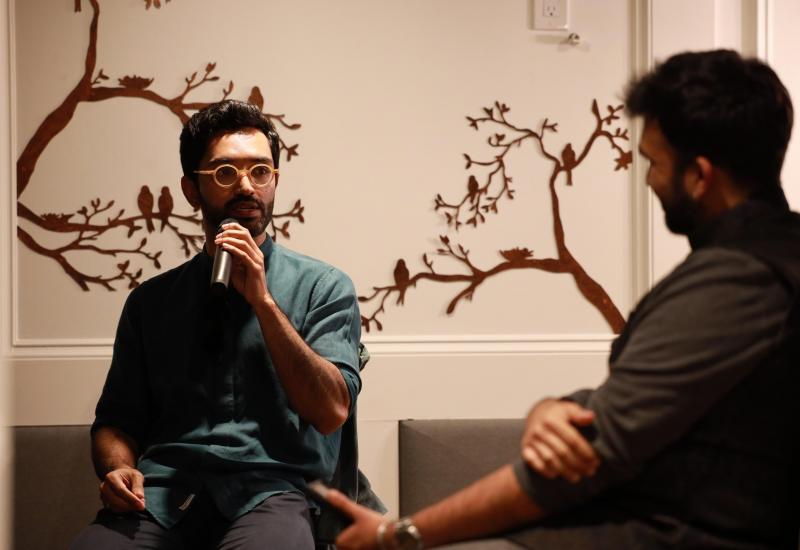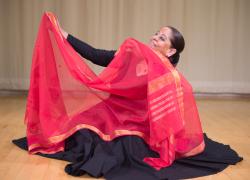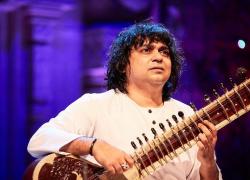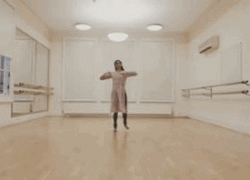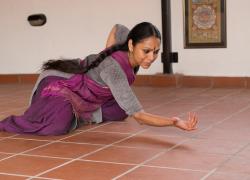Bayadère – The Ninth Life – a Preview
Shobana Jeyasingh talked to Sanjeevini Dutta about her vision for Bayadère – The Ninth Life, before its preview at mac, Birmingham on 18 March 2017.
Bayadère – The Ninth Life is Shobana Jeyasingh’s radical reimagining of Marius Petipa’s celebrated 1877 ballet La Bayadère. The ballet is a tale of love, rivalry, jealousy and drama involving the bayadère (‘temple dancer’), the warrior she loves, the High Brahmin who loves her, a Rajah and his daughter. Jeyasingh’s contemporary and personal vision of the piece, commissioned by the Royal Opera House, draws on the original story of the ballet, as well as the first visit of Indian temple dancers to Europe in 1838 as recorded by the contemporary poet and critic Théophile Gautier. The music, performed live by the ROH Orchestra, is by her frequent collaborator Gabriel Prokofiev.
Sanjeevini Dutta talked to Shobana Jeyasingh about her project:
Q: A very Orientalist story is subverted in your production. Please comment.
A: Ever since I saw a production of La Bayadère many years ago in London I noted what a classic Orientalist text it was. The fact that it featured a devadasi seemed even more of an invitation to scrutiny! While I was researching the history of the ballet and its French choreographer I happened on the historic visit of five dancers from a temple near Pondicherry to Paris in 1838. Joe Bor’s work on this topic was particularly helpful. The Indian dancers’ visit was almost forty years prior to the creation of the ballet. The well-known French writer and critic Théophile Gautier has left us a gripping account of the impression they created. Both these narratives ‒ the ballet and the visit of the Pondicherry dancers ‒ feed into the ‘retelling’ of my own Bayadère story.
Q: Why did you choose this moment to look into the early forays of Indian dance in Europe and the UK?
A: The idea had been in my head for many many years but the opportunity presented itself only recently. I also probably needed to have had a personal history of reasonable duration to reflect on this subject.
Q: Over the years, you have created a very strong individual stamp to your work, going beyond the Indian aesthetic sensibility where the use of face is as important as the body and music structures the dance. Would you agree that you have defined your ‘own aesthetic’?
A: When I learned bharatanatyam I was just as fascinated by the nritya or dramatic aspects as I was by nritta where the whole body spoke through space and time. I guess in my own choreography I wanted to tell ‘stories’ where the body moved as a single unit to create meanings that were less linear and less character-led.
As for music, there are times in my own choreography when the movement is structured by the music. However, for me, this is just one way of making dance and music relate to each other among many. I am not sure if I am dogmatic enough to define anything as grand as a personal aesthetic! What I have recognised about my choices in the studio over the years is a tendency to favour the body that is in emotional counterpoint to the space around it which in turn favours movements that ‘growl’ rather than ‘sing sweetly’.
Q: Has the current climate of austerity created the need for greater resourcefulness by artists?
A: Definitely. As the climate for arts funding is changing rapidly around us, artists have had to pay attention to market forces in a way that we did not need to in the past. A small company’s energies have to be deployed more and more in fund-raising and finding allies and subsidies outside the state funding provision.
Q: What is the source of your unending creativity?
A: I very rarely feel unendingly creative ‒ sadly! I am a worrier by nature and every dance work is a problem to solve and the process of completion always seems to throw up another question (compositional or conceptual) that needs to be answered and so it goes on!
The production toured from 18 March to 13 May 2017. Details here.








